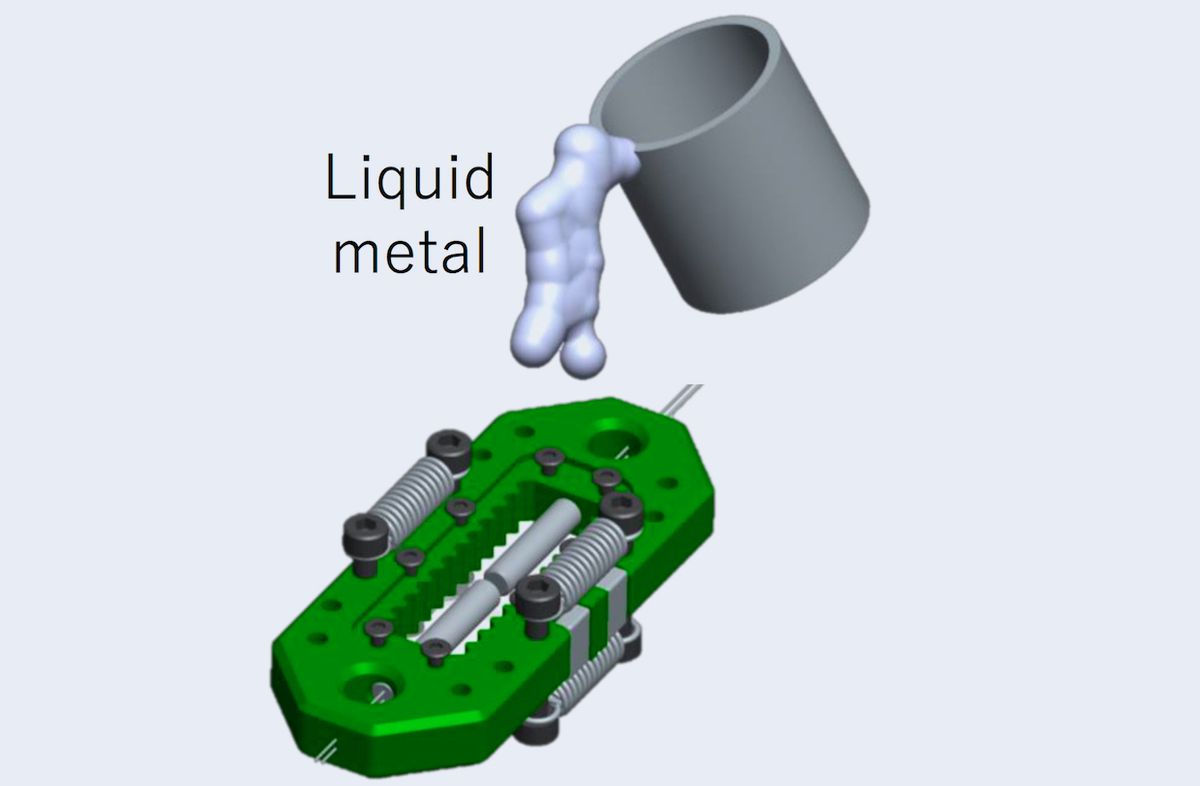The more dynamic robots get, the more likely they are to break. Or rather, all robots are 100 percent guaranteed to break eventually (this is one of their defining characteristics). More dynamic robots will also break more violently. While they’re in the lab, this isn’t a big deal, but for long term real-world use, wouldn’t it be great if we could rely on robots to repair themselves?
Rather than give a robot a screwdriver and expect it to replace its own parts, though, a much more elegant solution is robots that can heal themselves more like animals, where for many common injuries, all you have to do is sit around for a little while and your body will magically fix itself. We’ve seen a few examples of this before using self-healing polymers, but for dynamic robots that run and jump, you need the strength of metal.
At the 2019 IEEE/RSJ International Conference on Intelligent Robots and Systems (IROS) last month, roboticists from the University of Tokyo’s JSK Lab presented a prototype for a robot leg with a tendon “fuse” made out of a metal that can repair fractures. It does that by autonomously melting itself down and reforming into a single piece. It’s still a work in progress, but it’s basically a tiny little piece of the T-1000 Terminator. Great!

This is a life-sized robotic leg with an Achilles tendon made up of a cable that transmits force from the foot around the ankle to the lower leg bone. The cable is bisected by a module containing a bolt made out of a metallic alloy that will snap under stress lower than any other point in the system, meaning that it acts like a mechanical fuse—it’ll be the first thing that breaks, sacrificing itself to protect the robot’s other joints.

The alloy has a very low melting point (just 50° Celsius), and the module around it is made up of two halves connected by magnets and springs. If the bolt breaks, the magnets and springs will come apart also, but then snap back together, realigning the two broken halves of the bolt. At that point, internal heaters fire up, the two halves of the bolt liquify, and then melt back together again, healing the tendon within about half an hour. This video shows the robot falling, the tendon breaking, and then the robot self-healing and starting to stand up again:
In the video, it’s not quite good as new—it turns out that passive melting reduces the strength of the self-healing bolt to just 30 percent of where it was before the break. But after some additional experiments, the researchers discovered that gentle vibration during the melting and reforming process can bring the healed strength up above 90 percent of the original strength, and there’s likely even more optimization that can be done.
The researchers feel like this is a practical system to have in a real robot, and the plan is to refine it to the point where it’s a realistic feature to have on a dynamic legged robot.
“An Approach of Facilitated Investigation of Active Self-healing Tension Transmission System Oriented for Legged Robots,” by Shinsuke Nakashima, Takuma Shirai, Kento Kawaharazuka, Yuki Asano, Yohei Kakiuchi, Kei Okada, and Masayuki Inaba from the University of Tokyo, was presented at IROS 2019 in Macau.
Evan Ackerman is a senior editor at IEEE Spectrum. Since 2007, he has written over 6,000 articles on robotics and technology. He has a degree in Martian geology and is excellent at playing bagpipes.



